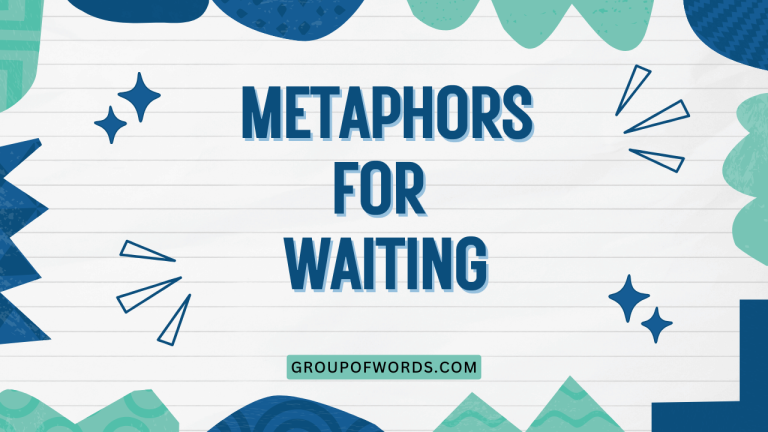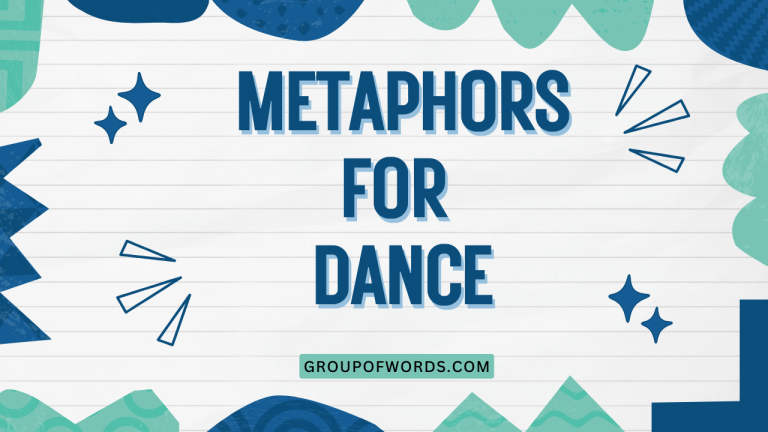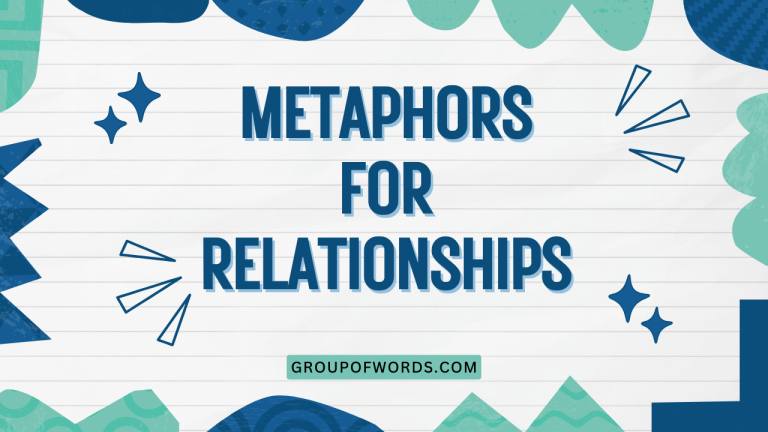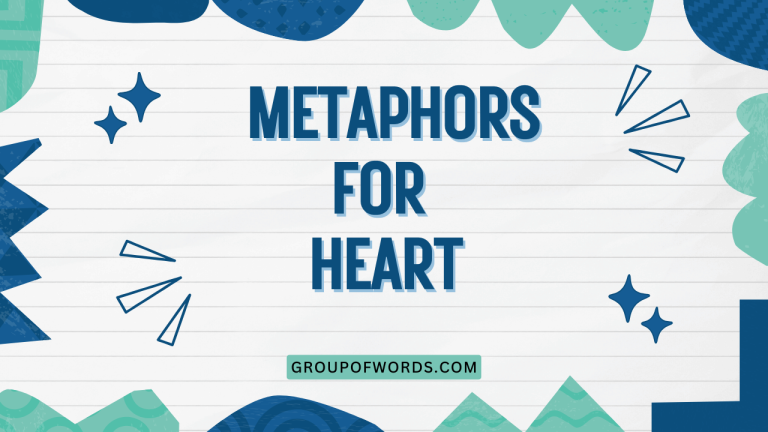Similes for Hot: Mastering Figurative Language
Understanding and using similes effectively is a crucial skill for anyone looking to enhance their writing and communication. Similes add color, depth, and vividness to our language, making it more engaging and memorable.
Specifically, knowing a variety of similes to describe heat allows you to convey different intensities and qualities of hotness, from a gentle warmth to an unbearable scorch. This article provides a comprehensive guide to similes for “hot,” exploring their meanings, structures, and usage, suitable for English language learners of all levels.
Whether you are a student aiming to improve your essay writing, a professional seeking to add flair to your presentations, or simply a language enthusiast eager to expand your vocabulary, this guide will equip you with the knowledge and practice necessary to master similes for “hot.” By the end of this article, you’ll be able to confidently use these figurative expressions to paint compelling verbal pictures and communicate more effectively.
Table of Contents
- Definition of Simile
- Structural Breakdown of Similes
- Types of Similes for “Hot”
- Examples of Similes for “Hot”
- Usage Rules for Similes
- Common Mistakes with Similes
- Practice Exercises
- Advanced Topics
- Frequently Asked Questions
- Conclusion
Definition of Simile
A simile is a figure of speech that directly compares two different things using the words “like” or “as.” The purpose of a simile is to highlight a shared quality or characteristic between the two things being compared, making the description more vivid and relatable. Similes are a powerful tool for creating imagery, emphasizing specific attributes, and engaging the reader’s imagination.
Unlike metaphors, which state that one thing *is* another, similes acknowledge the comparison with “like” or “as.” This distinction is crucial. A metaphor might say, “The sun is a furnace,” while a simile would say, “The sun is *like* a furnace.” The simile is less direct and more suggestive, allowing for a nuanced understanding.
In the context of describing something as “hot,” similes can be used to compare the temperature to various objects, sensations, or experiences that are commonly associated with heat. This allows for a more creative and expressive way to convey the intensity and nature of the heat.
Structural Breakdown of Similes
The basic structure of a simile involves three key components: the subject, the linking word, and the object of comparison. Understanding each of these components is essential for constructing effective and grammatically correct similes.
- Subject: This is the thing being described. In our case, it’s something that is hot, such as the weather, an object, or a feeling.
- Linking Word: This is either “like” or “as.” These words explicitly signal that a comparison is being made.
- Object of Comparison: This is the thing the subject is being compared to. It should be something that is commonly understood to be hot or associated with heat.
The general formula for a simile is: Subject + Linking Word + Object of Comparison. For example, “The desert is like an oven” or “The sun is as hot as fire.”
Similes can also be expanded with adjectives and adverbs to provide more detail and nuance. For instance, instead of saying “The coffee is like fire,” you could say “The coffee is as hot as a raging fire,” adding emphasis and intensity to the comparison.
Types of Similes for “Hot”
Similes for “hot” can be categorized based on the type of object or sensation they compare the heat to. This categorization can help you choose the most appropriate simile for a particular context and desired effect.
1. Temperature-Based Similes
These similes directly compare the heat to specific temperatures or objects known for their high temperatures.
2. Fire-Related Similes
These similes use fire or fire-related imagery to convey the intensity and destructive potential of the heat.
3. Sensory Similes
These similes appeal to the senses, describing how the heat feels, smells, or even looks.
4. Exaggerated Similes
These similes use hyperbole to emphasize the extreme nature of the heat, often for humorous or dramatic effect.
Examples of Similes for “Hot”
Here are several examples of similes for “hot,” organized by the categories discussed above. Each category includes a variety of similes to illustrate the different ways you can describe heat using figurative language.
Temperature-Based Similes Examples
This table provides examples of temperature-based similes, comparing the heat to objects known for their high temperatures.
| Simile | Explanation |
|---|---|
| As hot as an oven | Compares the heat to the high temperature inside an oven. |
| Like standing in a furnace | Suggests an extremely intense and enclosed heat source. |
| As hot as a kiln | Refers to the intense heat of a kiln used for firing pottery. |
| Like a blast furnace | Emphasizes the high temperature and industrial nature of the heat. |
| As hot as molten lava | Compares the heat to the extremely high temperature of flowing lava. |
| Like the surface of the sun | Indicates an incredibly high and dangerous temperature. |
| As hot as a branding iron | Refers to the heat of a metal tool used for branding livestock. |
| Like a hair dryer on full blast | Describes a focused and intense heat source. |
| As hot as a radiator | Compares the heat to that of a radiator used for heating rooms. |
| Like a hot plate | Suggests a steady and intense surface heat. |
| As hot as asphalt in July | Refers to the intense heat absorbed by asphalt on a hot summer day. |
| Like a sauna | Compares the heat to the humid and intense environment of a sauna. |
| As hot as a tanning bed | Describes the artificial heat used in tanning beds. |
| Like the inside of a car in summer | Refers to the trapped and intense heat inside a parked car. |
| As hot as a pizza oven | Compares the heat to the high temperature required for baking pizzas. |
| Like a freshly ironed shirt | Suggests a brief but intense burst of heat. |
| As hot as a blacksmith’s forge | Refers to the intense heat used in metalworking. |
| Like a boiler room | Describes a confined space with intense, industrial heat. |
| As hot as a steam pipe | Compares the heat to the high temperature within a steam pipe. |
| Like a clothes dryer | Suggests a dry, circulating heat. |
| As hot as an engine block | Compares the heat to the intense temperatures generated by an engine. |
| Like standing next to a jet engine | Implies an overwhelming and powerful heat source. |
| As hot as a server room | Refers to the heat generated by computer servers. |
| Like a volcanic vent | Describes a direct and intense source of geothermal heat. |
Fire-Related Similes Examples
This table provides examples of fire-related similes, using fire imagery to convey the intensity of the heat.
| Simile | Explanation |
|---|---|
| As hot as fire | A classic simile emphasizing the intense heat of fire. |
| Like a raging inferno | Suggests an uncontrollable and destructive heat. |
| As hot as burning coals | Compares the heat to the intense embers of burning coal. |
| Like a bonfire | Refers to the large and intense heat of a bonfire. |
| As hot as a dragon’s breath | A fantastical simile suggesting a fiery and powerful heat. |
| Like the heart of a volcano | Indicates an extremely high and volatile heat source. |
| As hot as a flame thrower | Compares the heat to the directed and intense heat of a flamethrower. |
| Like embers glowing in the dark | Suggests a persistent and intense heat source. |
| As hot as the sun’s core | Emphasizes the extreme heat at the center of the sun. |
| Like walking through a wall of fire | Describes an overwhelming and inescapable heat. |
| As hot as a furnace blast | Refers to the intense and sudden burst of heat from a furnace. |
| Like a wildfire spreading rapidly | Suggests a quickly intensifying and uncontrollable heat. |
| As hot as the devil’s kitchen | A figurative simile suggesting an extremely unpleasant and fiery heat. |
| Like standing near a burning building | Describes the intense and radiating heat from a fire. |
| As hot as the coals in a barbecue | Compares the heat to the intense embers used for grilling. |
| Like a blacksmith’s fire | Refers to the intense and focused heat used for shaping metal. |
| As hot as a rocket’s exhaust | Compares the heat to the intense and powerful exhaust of a rocket. |
| Like being inside a crematorium | Suggests an extremely intense and morbid heat. |
| As hot as the fourth of July | Implies a celebratory, but intensely hot, summer day. |
| Like a pyre burning brightly | Describes an intense and ceremonial fire. |
| As hot as a burning meteor | Compares the heat to the intense friction of a meteor entering Earth’s atmosphere. |
| Like a star exploding | Implies an unimaginable and catastrophic heat. |
| As hot as hellfire | Refers to the intense and eternal fire of hell. |
Sensory Similes Examples
This table provides examples of sensory similes, describing how the heat feels, smells, or looks.
| Simile | Explanation |
|---|---|
| As hot as it feels to touch a stove | Describes the immediate and painful sensation of touching a hot stove. |
| Like being wrapped in a hot blanket | Suggests a suffocating and uncomfortable heat. |
| As hot as a fever burning inside | Compares the heat to the internal sensation of a high fever. |
| Like the air shimmering above asphalt | Refers to the visual distortion caused by intense heat. |
| As hot as the smell of burning rubber | Associates the heat with a distinct and unpleasant odor. |
| Like sweat dripping down your back | Describes the physical sensation of being overheated. |
| As hot as the sun beating down on your skin | Emphasizes the direct and intense heat of the sun. |
| Like a mirage shimmering in the distance | Refers to the optical illusion caused by heat refraction. |
| As hot as the feeling of sunburn | Compares the heat to the painful sensation of sunburn. |
| Like the taste of hot peppers | Associates the heat with a spicy and burning sensation. |
| As hot as the air feels before a thunderstorm | Describes the heavy and oppressive heat that precedes a storm. |
| Like a hot iron searing your flesh | Suggests an extremely painful and damaging heat. |
| As hot as the steam rising from a geyser | Compares the heat to the visible steam from geothermal activity. |
| Like the feeling of heatstroke coming on | Refers to the dangerous and debilitating effects of extreme heat. |
| As hot as the glare off the sand | Emphasizes the intensity and reflected heat from a sandy surface. |
| Like the burn of chili on your tongue | Describes a sharp, intense, and localized heat sensation. |
| As hot as the air in a desert at noon | Compares the heat to the dry and relentless heat of a desert. |
| Like the feeling of being baked alive | Suggests a slow, suffocating, and torturous heat. |
| As hot as the water in a hot spring | Refers to the naturally heated water found in hot springs. |
| Like the smell of asphalt on a summer day | Associates the heat with the distinct odor of heated asphalt. |
| As hot as the feeling of a heat rash | Compares the heat to the itchy and uncomfortable sensation of heat rash. |
| Like the haze rising from hot pavement | Describes the visual effect of heat rising from a surface. |
| As hot as the feeling of dehydration | Compares the heat to the symptoms of a body lacking water. |
Exaggerated Similes Examples
This table provides examples of exaggerated similes, using hyperbole to emphasize the extreme nature of the heat.
| Simile | Explanation |
|---|---|
| As hot as the hinges of hell | An exaggerated simile suggesting an extremely fiery and unpleasant heat. |
| Like a thousand suns beating down | Emphasizes the overwhelming and intense heat. |
| As hot as if the world was ending | A dramatic simile suggesting catastrophic levels of heat. |
| Like being cooked in a giant microwave | Suggests an intense and all-encompassing heat source. |
| As hot as if the sky were on fire | A vivid simile emphasizing the extreme and dangerous heat. |
| Like the earth’s core had surfaced | Indicates an impossibly high and destructive heat. |
| As hot as if all the stars had fallen to earth | An exaggerated simile suggesting an unimaginable heat source. |
| Like being inside a supernova | Describes an incredibly intense and explosive heat. |
| As hot as if the sun exploded | Emphasizes the ultimate and catastrophic heat event. |
| Like standing on the surface of Mercury | Compares the heat to the extreme temperatures of a planet closest to the sun. |
| As hot as if the air could melt steel | Suggests an impossibly high temperature capable of melting metal. |
| Like being trapped in a dragon’s lair | A fantastical simile suggesting a fiery and dangerous heat. |
| As hot as if the oceans were boiling | Emphasizes the extreme and destructive potential of the heat. |
| Like the world was one giant oven | Suggests an all-encompassing and inescapable heat source. |
| As hot as if the polar ice caps had melted instantly | Compares the heat to a dramatic and climate-altering event. |
| Like being toasted by a giant laser beam | Describes an intense, focused, and futuristic heat source. |
| As hot as if the atmosphere was on fire | Suggests an all-encompassing and catastrophic heat event. |
| Like the sun was a giant magnifying glass | Emphasizes the intensified and focused heat of the sun. |
| As hot as if you were standing inside a volcano | Compares the heat to the extreme temperatures inside a volcanic crater. |
| Like being burned by a cosmic ray gun | A science fiction simile suggesting an intense and futuristic heat source. |
Usage Rules for Similes
Using similes effectively requires understanding and adhering to certain rules. These rules ensure that your similes are clear, impactful, and grammatically correct.
- Clarity: The comparison should be easily understood. The object of comparison should be something familiar to the audience.
- Relevance: The shared quality between the subject and the object of comparison should be relevant and meaningful.
- Originality: While some similes are common, try to create original comparisons that are fresh and engaging.
- Grammar: Ensure that the simile is grammatically correct. The linking words “like” and “as” should be used appropriately.
- Context: Consider the context in which you are using the simile. The simile should be appropriate for the tone and audience.
It’s also important to avoid clichés. Overused similes, such as “as hot as hell,” can lose their impact.
Strive for originality to make your writing more engaging.
Common Mistakes with Similes
Even experienced writers can make mistakes when using similes. Here are some common errors to avoid:
- Mixing Metaphors and Similes: Confusing metaphors and similes is a common mistake. Remember that similes use “like” or “as,” while metaphors do not.
- Using Clichés: Overusing common similes can make your writing sound unoriginal. Strive for fresh and creative comparisons.
- Illogical Comparisons: Ensure that the comparison makes sense. The shared quality should be clear and relevant.
- Grammatical Errors: Pay attention to grammar. The structure of the simile should be correct, and the linking words should be used appropriately.
Here are some examples of incorrect and correct similes:
| Incorrect | Correct | Explanation |
|---|---|---|
| The sun was fire. | The sun was like fire. | The first sentence is a metaphor, not a simile. |
| As hot as the sun. | As hot as the sun in the Sahara. | The second example is more specific and vivid. |
| Like a hot cold thing. | Like a hot stove. | The first comparison is illogical. |
Practice Exercises
Test your understanding of similes for “hot” with these practice exercises. Each exercise includes multiple questions to help you master the concept.
Exercise 1: Identifying Similes
Identify the similes in the following sentences.
| Question | Answer |
|---|---|
| 1. The desert was like an oven. | like an oven |
| 2. The sun is a furnace. | (This is a metaphor, not a simile) |
| 3. The coffee was as hot as fire. | as hot as fire |
| 4. Her anger burned like a wildfire. | like a wildfire |
| 5. The room was as hot as a sauna. | as hot as a sauna |
| 6. The pavement shimmered like a mirage. | like a mirage |
| 7. His face was red like burning coals. | red like burning coals. |
| 8. The air felt like a hot blanket. | like a hot blanket |
| 9. The tea was as hot as molten lava. | as hot as molten lava. |
| 10. It felt like standing next to a jet engine. | like standing next to a jet engine. |
Exercise 2: Completing Similes
Complete the following similes with an appropriate object of comparison.
| Question | Answer |
|---|---|
| 1. As hot as _____. | As hot as fire. |
| 2. Like standing in a _____. | Like standing in a furnace. |
| 3. As hot as burning _____. | As hot as burning coals. |
| 4. Like the surface of the _____. | Like the surface of the sun. |
| 5. As hot as a _____ forge. | As hot as a blacksmith’s forge. |
| 6. It felt like being in a _____. | It felt like being in a sauna. |
| 7. The desert was like a _____. | The desert was like an oven. |
| 8. As hot as the hinges of _____. | As hot as the hinges of hell. |
| 9. The air felt like being wrapped in _____. | The air felt like being wrapped in a hot blanket. |
| 10. The metal was like _____. | The metal was like burning embers. |
Exercise 3: Creating Similes
Create your own similes for “hot” based on the given prompts.
| Prompt | Example Answer |
|---|---|
| 1. Describe the heat of a summer day. | The summer day was as hot as standing on asphalt in July. |
| 2. Describe the heat of a cup of coffee. | The coffee was like molten lava. |
| 3. Describe the heat of a desert. | The desert felt like being trapped in the world’s largest oven. |
| 4. Describe the heat of anger. | His anger burned as hot as a wildfire. |
| 5. Describe the heat of a fever. | The fever felt like a furnace burning inside me. |
| 6. Describe the heat of a freshly ironed shirt. | The shirt was as hot as a freshly ironed shirt straight off the ironing board. |
| 7. Describe the heat radiating from a burning building. | Standing near the burning building was like standing next to a blast furnace. |
| 8. Describe the heat of a tanning bed. | The tanning bed was as hot as the surface of the sun, but thankfully less dangerous. |
| 9. Describe the heat inside a car on a summer day. | The inside of the car was like a sauna, baking everything inside. |
| 10. Describe the heat coming from a pizza oven. | The air around the pizza oven was as hot as dragon’s breath. |
Advanced Topics
For advanced learners, here are some more complex aspects of using similes effectively.
- Subtlety: Similes can be used subtly to create a more nuanced effect. Instead of directly comparing two things, you can hint at the comparison through imagery and suggestion.
- Multiple Similes: Combining multiple similes in a single passage can create a richer and more detailed description. However, be careful not to overload the reader with too many comparisons.
- Similes and Metaphors in Combination: Using similes and metaphors together can create a powerful and dynamic effect. Start with a simile to introduce a comparison, and then transition to a metaphor to deepen the connection.
Experiment with these techniques to elevate your writing and communication skills.
Frequently Asked Questions
Here are some frequently asked questions about similes.
- What is the difference between a simile and a metaphor?
A simile compares two things using “like” or “as,” while a metaphor states that one thing *is* another. Similes are less direct and more suggestive, while metaphors are more assertive.
- Why are similes important in writing?
Similes add color, depth, and vividness to writing, making it more engaging and memorable. They help readers visualize and understand complex concepts by relating them to familiar experiences.
- How can I create original similes?
Think outside the box and look for unexpected connections between things. Consider sensory details and personal experiences to create unique and memorable comparisons.
- What are some common mistakes to avoid when using similes?
Avoid mixing metaphors and similes, using clichés, making illogical comparisons, and committing grammatical errors. Always ensure that your similes are clear, relevant, and grammatically correct.
- Can I use similes in formal writing?
Yes, but use them sparingly and appropriately. Similes can add flair to formal writing, but avoid overusing them or using comparisons that are too informal or colloquial.
- How do I choose the right simile for a particular context?
Consider the tone, audience, and purpose of your writing. Choose similes that are appropriate for the context and that effectively convey the desired meaning and effect.
- Are there any specific types of writing where similes are more effective?
Similes are particularly effective in descriptive writing, poetry, and creative writing, where imagery and vivid language are highly valued. They can also be useful in persuasive writing to make abstract concepts more relatable.
- How can I improve my ability to use similes effectively?
Practice regularly by writing and experimenting with different comparisons. Read widely and pay attention to how other writers use similes. Seek feedback from others to identify areas for improvement.
Conclusion
Mastering similes for “hot” is a valuable skill that can significantly enhance your writing and communication. By understanding the structure, types, and usage rules of similes, you can effectively convey the intensity and nature of heat in a vivid and engaging way.
Remember to avoid common mistakes, practice regularly, and strive for originality to create compelling and memorable comparisons.
Similes are a powerful tool for adding color and depth to your language. By incorporating a variety of similes into your writing, you can paint vivid pictures, evoke strong emotions, and connect with your audience on a deeper level.
Keep practicing, experimenting, and refining your skills to become a master of figurative language.






